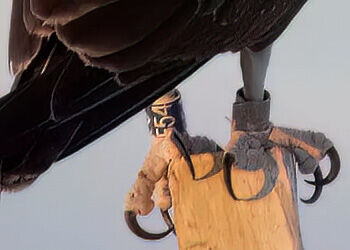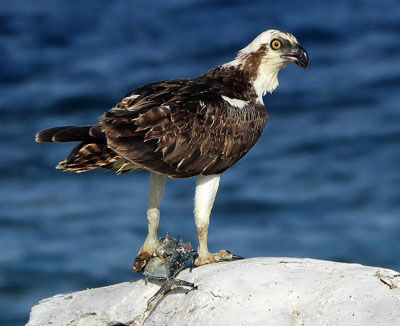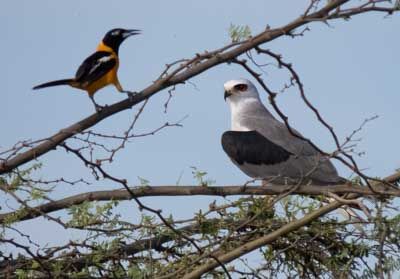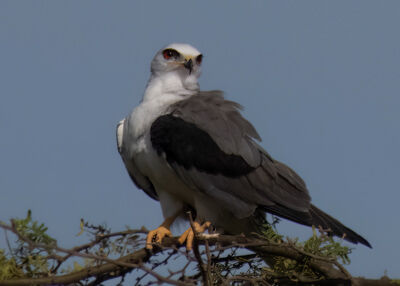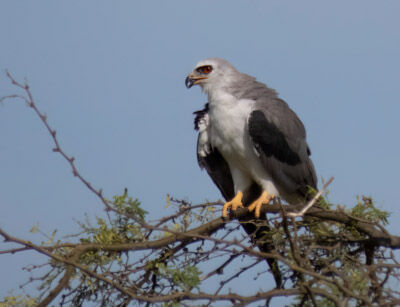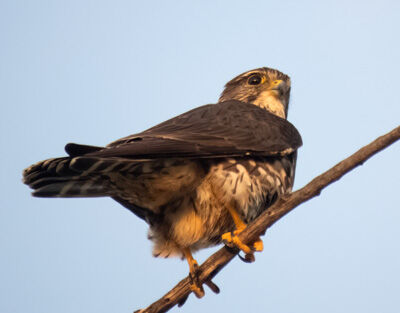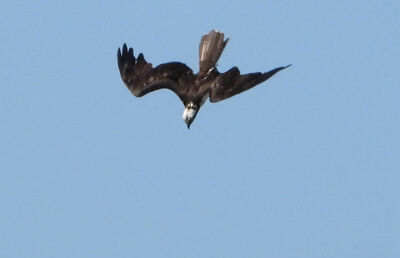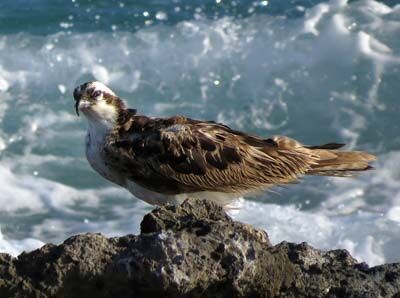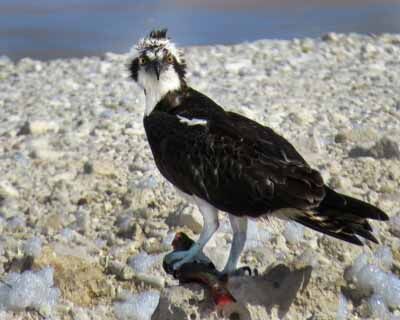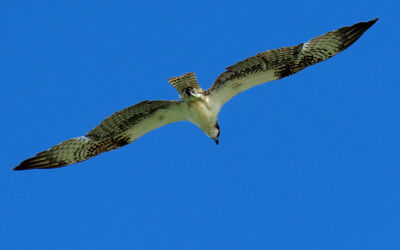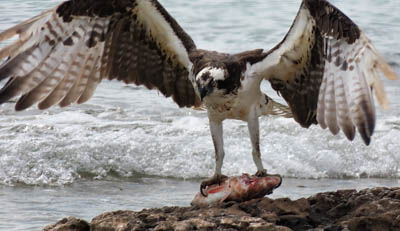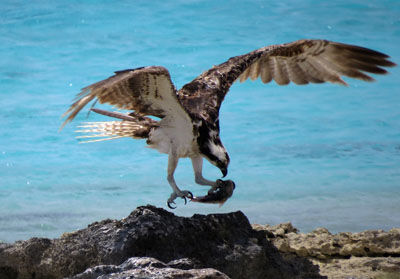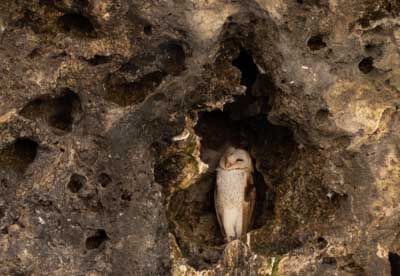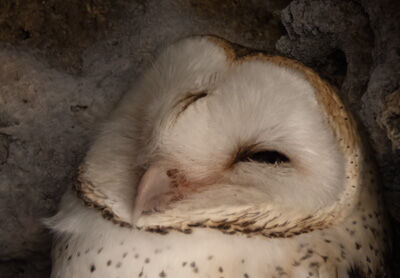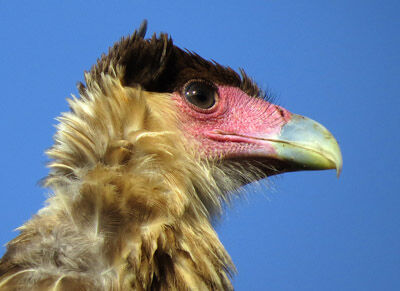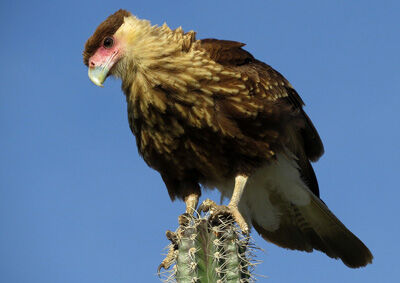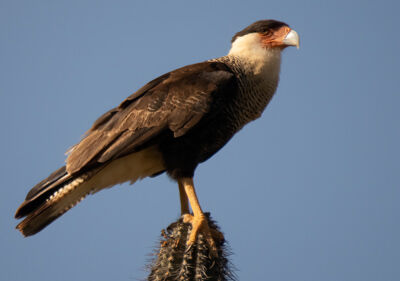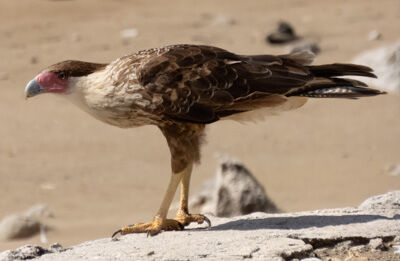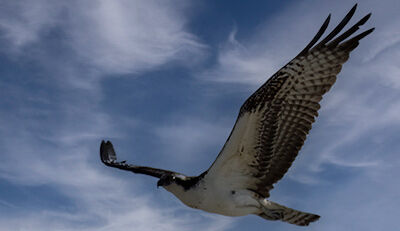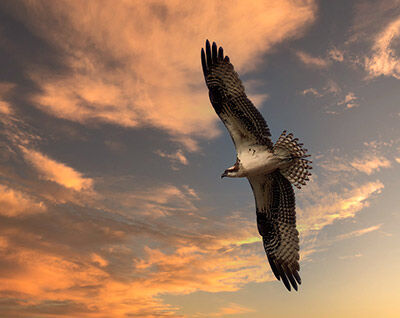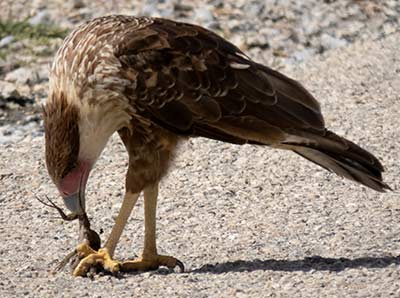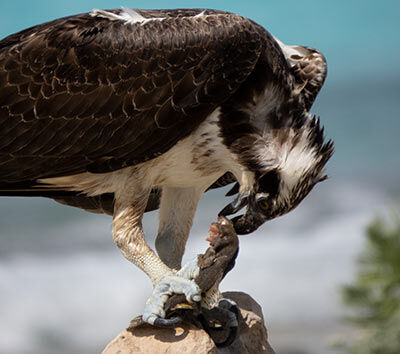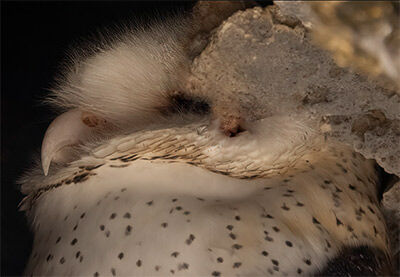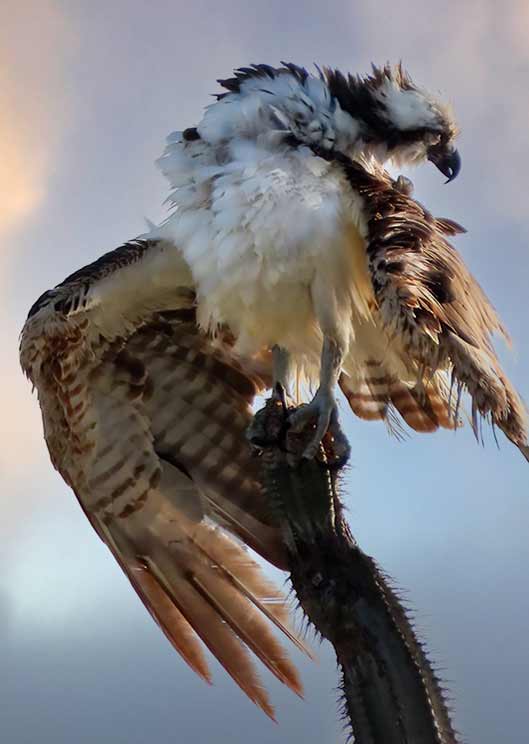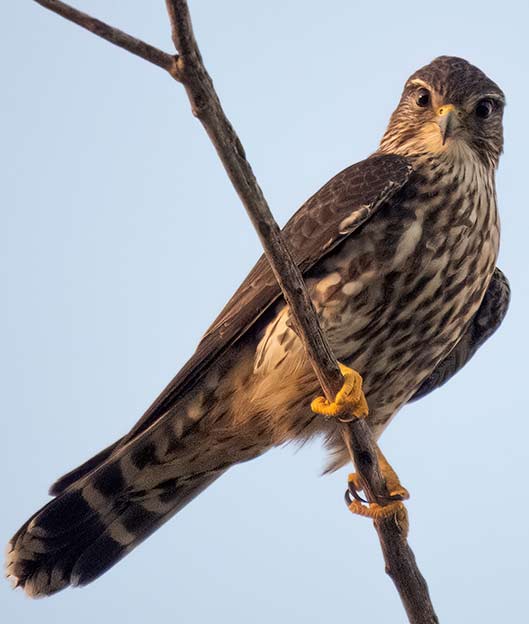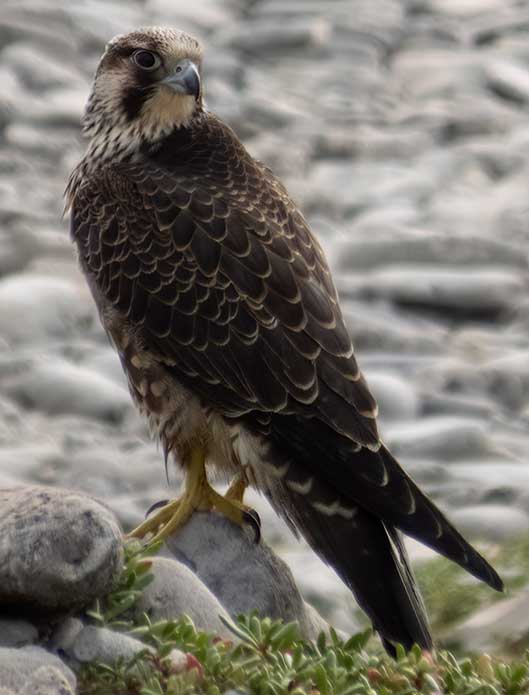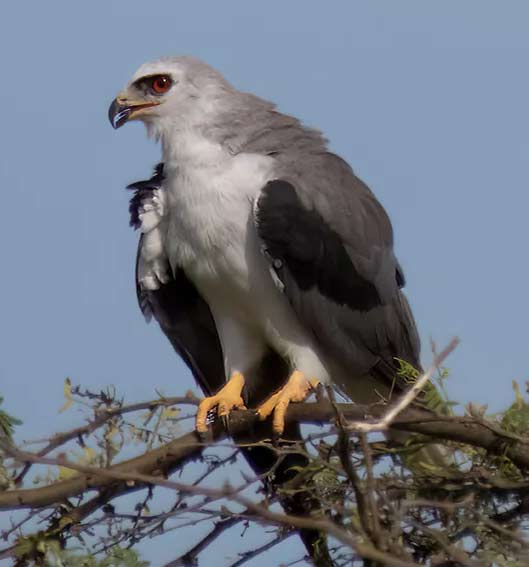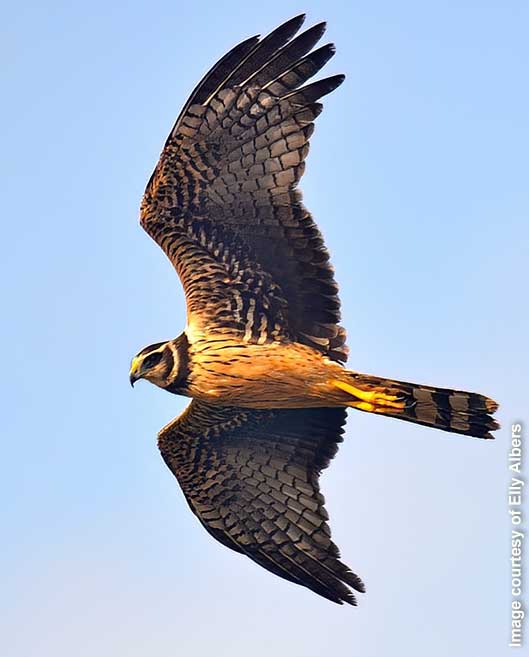Raptor Identification Guide for Bonaire
Helping to identify Bonaire’s birds of prey.
The Raptor Identification Guide for Bonaire will help visiting birders distinguish between Bonaire’s birds of prey.
Field marks, habitat, size, and similar species are all noted to assist with knowing where and what to look for as you identify the island’s raptors–both breeding residents and migrants.
What is a raptor?
Also called birds of prey, raptors are carnivorous birds, so they hunt and capture live prey. In fact, in Latin, the word “raptor” means “to seize or grasp.”
Raptors can be diurnal birds (active during the day) or nocturnal birds (active at night) and include eagles, hawks, kites, falcons, and owls. Although vultures are often considered raptors, they actually eat carrion, versus live prey, and they are actually more closely related to storks.
Raptors all share three main characteristics:
Keen eyesight and hearing.
Estimated at eight to ten times the acuity of humans, raptors have keen hearing and vision. They utilize their sharp sense of vision (it is theorized that some raptors can see the ultraviolet light spectrum), to locate and track their prey. Their eyes, which are very large in comparison to the size of their skull, cannot look in various directions, such as our eyes, but instead, they have extra bones in their neck which allow the bird to swivel their head around from side to side. If you find an Osprey with a fresh-fish catch, watch as it consumes the fish–it will take a bite, and then swivel its head from right to left to assist in severing the bite from the rest of the fish.
Their hearing also can be essential to their locating their prey. Their ears are found just behind their eyes but are concealed by feathers. One is located higher than the other, which aids in pin-pointing sound more precisely.
Eight sharp talons.
Raptors will use their powerful and sharp talons to capture their prey, but also to defend themselves. Some raptors have two toes pointing forward while two toes point backward, the better to grip their prey, which could be wiggling wildly and attempting to escape. Other raptors have evolved different adaptations to assist them while hunting their specific prey. For example, Ospreys have barbed pads on the bottom of their feet, which help grip a slippery fish and keep it in place, while they fly to a perch to eat.
A hooked bill.
The bills of raptors have evolved to be very specific across all types of birds of prey. The curved, hooked bill has sharp cutting edges and comes to a point; this adaptation allows the bird to tear the prey into bite-sized pieces. They can also use the bill to kill their prey. Different species of raptors have evolved additional specialized adaptations to their bills in order to facilitate the capture and eating of their specific prey.
Research what birds of prey to expect during the time you are on Bonaire.
If you are planning a visit to Bonaire, do a bit of research in advance so you know what species to expect during the time frame you are on Bonaire. For example, our two native raptors are present year-round, while others may be migrants that are only seen during fall or spring migration, or over the winter months. Some raptors are very rare, with only single individuals observed by a few lucky birders. In the Raptor Identification Guide for Bonaire below, you’ll find details as to which birds of prey you are most likely to observe, along with their size, expected habitat, and similar species.
Bonaire’s resident, breeding raptors.
The Crested Caracara
The Crested Caracara is the raptor you will most likely find on Bonaire throughout the year. A resident, breeding bird of prey, you might encounter Crested Caracaras in several locations around Bonaire, and individuals can be of any age, such as the young, vocalizing Crested Caracara illustrated in the image.
The Barn Owl
Barn Owls are Bonaire’s other resident breeding raptor. However, due to their reclusive nature and nocturnal activities, they are difficult to observe, and it is impossible to estimate how many Barn Owls are actually living on Bonaire. It is generally accepted that the Barn Owls on Bonaire are an endemic subspecies, due to their geographical isolation from other populations, but no research has yet been conducted that would confirm that hypothesis and allow official documentation and description as a subspecies.
Migrating birds of prey that can overwinter on Bonaire, or pass through on their migrations.
The migrating raptors that birders on Bonaire will normally see during fall, winter, or spring (generally October through April) include Ospreys, Peregrine Falcons, and Merlins.
Ospreys can be found year-round, but there are only a limited number of Ospreys in the summer months. Most likely they are young birds that do not yet heed the call to procreate, so they do not migrate north to breed. Ospreys are most numerous during spring or fall migrations, but a fair number of them do overwinter here on Bonaire as well. They have extreme site fidelity, so if you find one, most likely you can return to the same location and observe it again and again.
Peregrine Falcons and Merlins are also present from about October through April. Just like the Ospreys, they are most numerous during migration periods, but they can and do overwinter on Bonaire as well. These are very fast birds, so, if they are flying, you’ll need to identify them quickly! The Peregrine Falcon is much larger than the Merlin and has a distinctive “tear-drop” under the eye. Other field marks for these raptors are noted below.
Occasionally, very rare raptors can visit, primarily from South America.
Once in a great while, Bonaire is blessed with sightings of very rare raptors. Such was the case in 2015, when a single Long-winged Harrier was sighted at Lac Bay, as well as in September 2022, when a White-tailed Kite was observed hunting over agricultural fields in the interior of Bonaire. These were individual birds, but they were observed by several lucky birders on the island. Keep your eyes open, as you never know when another one will make an appearance!
Remember, if all else fails, and you are unable to identify your raptor, try to take an image with your phone. The Merlin Bird ID app will allow you to upload the image, and their database will provide you with its best guess as to the identification of your bird of prey.
Bonaire Raptor Identification
The Raptor Identification Guide for Bonaire is sorted by the likelihood of observation–beginning with the most likely and continuing to the least likely.
Crested Caracara (Caracara plancus)
Field notes: The Crested Caracara is one of Bonaire’s true resident raptors, residing year-round and breeding here on Bonaire.
Field marks:
⋅ heavy, bluish bill with orange facial skin (pink in young birds)
⋅ dark brown wings, back, and belly
⋅ breast and hindneck are buff-colored and streaked with brown
⋅ yellow legs
Normal habitat:
⋅ the majority of sightings are in the northern, more forested, area of the island, although sightings do occur around Lac Bay or the eastern coastline
⋅ often observed perching at the tops of cactus
⋅ the Crested Caracara is an opportunistic feeder and will feed upon carrion as well as catch live prey; thus, it also can be found walking on the ground
Size: ⋅ 20-22 inches/51-56 cm
Similar species: The only other raptor of a similar size is the Osprey, however, the Osprey is visually different, with a white belly and underwings and blue-gray legs.
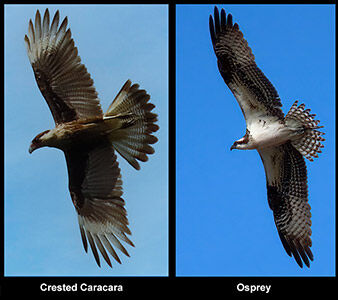
Osprey (Pandion haliaetus)
Field notes: The Osprey is normally considered an overwintering migrant from North America, but observations are sometimes also made during the summer months. Sightings usually increase in the fall or spring months as some Ospreys will also make a rest stop on Bonaire, before continuing to migrate to or from South American overwintering grounds. Learn more about migrating Ospreys. The West Indies resident race (P.h. ridgwayi) is not normally observed on Bonaire.
Field marks:
⋅ large, long-winged fish-eating raptor
⋅ brown upperparts and eye stripe, white underparts
⋅ blue-gray legs
⋅ narrow dark bands on the tail
⋅ near-shore coastal environments, where the Osprey will hunt for fish in the shallower waters
⋅ marine or brackish ponds or lagoons
⋅ freshwater ponds
Size: 21-24 inches/53-61 cm
Similar species: The only other raptor of a similar size is the Crested Caracara, however, the Crested Caracara is visually different, with a dark belly, dark wings with white patches in the primaries, reddish-facial skin, and long yellow legs.

Merlin (Falco columbarius)
Field notes: Merlins are small and very fast falcons that can overwinter on Bonaire or pass through on their way to the northern area of South America. Merlins mostly eat birds, typically catching them in mid-air during high-speed attacks. They often specialize in hunting a couple of the most abundant species around and prey are generally small to medium-sized birds. Merlins will attack at high speed, horizontally or even from below, chasing the prey upwards until they tire. Other prey includes large insects such as dragonflies, bats caught at cave openings, nestling birds, and small mammals.
Field marks:
⋅ the wings are pointed and the long tail is gray with three or four dark bands
⋅ males’ upperparts are bluish-gray while females and immature birds display brown upperparts
⋅ the underparts of both sexes are buffy in color and are streaked with brown
⋅ the crown is dark and there could be a weak teardrop marking under the eye
Normal habitat:
⋅ Merlins can be found in a wide variety of habitats in areas of their favorite prey–shorebirds, doves, and terrestrial birds
⋅ they can be found hunting in either marine habitats or freshwater habitats
Size: 10-14 inches/25-36 cm
Similar species: The Merlin may look similar in shape and plumage pattern to the Peregrine Falcon, but it is much smaller in size than the Peregrine Falcon.
Peregrine Falcon (Falco peregrinus)
Field notes: The Peregrine Falcon is a winter migrant to Bonaire which can overwinter on Bonaire or use the island as a rest stop on longer migrations to or from overwintering grounds in South America. It will hunt other birds using a high-speed chase and will capture its prey while on the wing. It will then carry its prey to a favorite feeding perch. Peregrine Falcons can have high site fidelity, returning to the same hunting range each winter.
Field marks:
⋅ best recognized by its strong facial pattern with a dark teardrop under the eye
⋅ the Peregrin Falcon is the largest falcon to be observed on Bonaire
⋅ wings are broad-based and pointed
⋅ the tail is short and has dark barring
⋅ young birds (first year) display brownish upper parts with a white cheek and throat; upper parts on adult birds will become more bluish-gray, but also with the white cheek and throat
Normal habitat:
⋅ the Peregrine Falcon can be found in a wide variety of habitats in areas of its favorite prey–shorebirds, doves, egrets, and ducks
⋅ they can be found hunting in either marine habitats or freshwater habitats
Similar species: The Peregrine Falcon may look similar in shape and plumage pattern to the Merlin, but it is much larger in size than the Merlin.
Barn Owl (Tyto alba)
Field notes: The Barn Owl hunts at night, so it is rarely seen during the day. On Bonaire, this owl is generally considered to be an endemic subspecies, due to its long isolation from populations of other islands, but it has never been officially studied and described as such. It is one of Bonaire’s resident breeding raptors.
Field marks:
⋅ long legs
⋅ heart-shaped face
⋅ pale, speckled breast
⋅ soft tannish-brown upper parts
Normal habitat:
⋅ breeds and/or roosts in limestone caves and occasionally abandoned buildings
Size: 16 inches/41 cm
Similar species: None that would normally be found on Bonaire.
White-tailed Kite (Elanus leucurus)
Field notes: The White-tailed Kite is an extremely rare raptor on Bonaire with only one adult individual observed in September 2022. It is a small, elegant hawk, that often can be seen “kiting” (hovering) over agricultural fields with its face turned down, watching for small mammals, its favorite prey.
⋅ long, pointed wings with a tail that is squared off
⋅ an all-white head, tail, and underside
⋅ pale gray back and upper wings which contrast with black bars on the shoulders
⋅ in flight, the undersurface of the wing shows a black splotch at the wrist with black outer wings
⋅ adults will display a black patch surrounding a red eye
Normal habitat:
⋅ dry grasslands or agricultural fields where it will perch on high trees in the vicinity when not actively hunting
Size: 15-16 inches/38-41 cm
Similar species: None that would normally be found on Bonaire.
Long-winged Harrier (Circus buffoni)
Field notes: The Long-winged Harrier is an extremely rare raptor from South America, with only one adult individual observed in July 2015.
Field marks:
⋅ long-winged and long-tailed hawk with a white rump
⋅ dark upper breastband
⋅ strong, contrasting facial pattern
⋅ heavy barring in the underwing
⋅ the tail has alternating gray and black bands
Normal habitat:
⋅ will glide over wetland areas looking for prey
Size: 18-24 inches/46-61 cm
Similar species: None that would normally be found on Bonaire.
Get In Touch
Get in touch with Susan to check availability for the dates you are visiting Bonaire.
Consent: By using this form you agree with the storage and handling of your data by this website.

